The 27th
LaureateSculpture
Wolfgang Laib
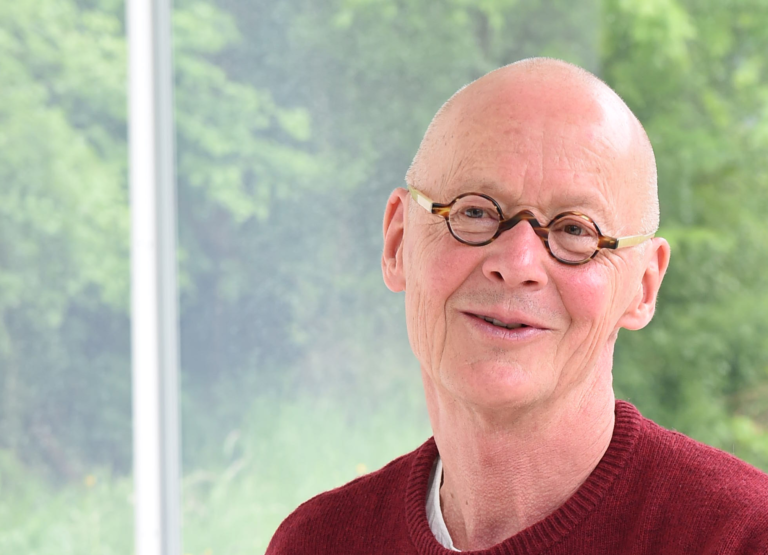
At the heart of Wolfgang Laib’s work lies his pursuit of a deeper understanding of the meaning of life. Influenced from an early age by trips to India with his parents,who were greatly interested in its art and culture,his work bears witness to a thirst for Eastern culture and philosophy. At university he studied medicine but the gradual realization that modern medicine in the Western world is usually about the physical body,often ignoring the spiritual,led him to a profound dissatisfaction and to his decision to switch from medicine to art at the age of 24; searching for the true meaning of life and death within a spiritual,artistic context. In 1975,he created the first of his Milkstones series ― rectangular pieces of polished white marble,sanded to create a slight depression that is then filled with milk. He is best known for his use of materials like milk,pollen,beeswax and rice; materials that bring life and extend it to the next generations. Pollen is collected from the flowers in neighboring fields and forests,by hand; an exacting and demanding process that produces the most astonishingly beautiful results through Laib’s creative vision. He exhibits globally - in 2003,he was the subject of a large-scale retrospective exhibition at the National Museum of Modern Art,Tokyo and in 2013 in New York’s MoMA.
Biography
Wolfgang Laib’s studio near Biberach,southern Germany,has no chairs,desks or other furniture that you would usually find in such places. In this space of ‘nothingness’,visitors find him at work; crouching on the floor with one knee raised,devoting himself to his art and creativity ― the image of an ascetic.
“As a child,I traveled to India because my parents were interested in Indian art and culture. There,they saw extreme poverty and began to support a whole village in South India. This was the beginning of a very deep and intense relationship with that country.” It was not the only thing that influenced him,but it is said that this experience has greatly influenced his art.
On graduation from school,Laib chose to study medicine,but soon realized that modern medicine mainly focuses on the physical body - which is at odds with his belief that life is not only about the physical body. So,dissatisfied with medicine,he changed course and at 24,became an artist,searching for the true meaning of life,death,spirituality and nature.
His first major piece,made only six months after leaving medical studies,was called Milkstone; a piece of marble meticulously rubbed down to create a shallow dish that is then filled with milk. Milk here is used as a symbol of life ― it fosters life,but becomes rotten if it’s left uncared for,thus transforming into a symbol of death. The carefully poured,white milk fills the marble dish peeking over the top due to surface tension; emitting for some time,gleaming life. However,as time passes it starts to decay and the artwork itself comes to an end. Laib says,“The Milkstone is about what I felt the essence of life to be. It’s a very simple act,but it contains all of that.”
From 1977,he started to collect pollen from dandelions,hazelnuts and other plants. Pollen is,of course,a symbol of life ― something to link life to the next generation. In the neighboring fields and forests,he carefully collects pollen from individual flowers in a jar ― time-consuming work,but only part of his creative activities.
He uses pollen for his artworks,sometimes spreading it on the floor,sometimes making a small mound with it. These creations are simply shaped,but they are certainly full of life - with strong colors and perfume.
Since then,he has been enthusiastically engaged in producing artworks,using unique materials such as beeswax and rice,which foster life and provide a link to the next generation.
He has a studio in New York,his wife,Carolyn’s birthplace,and also in southern India. He has held many exhibitions worldwide and in 1989,visited Japan for the first time. In 2003,he had large-scale retrospective exhibitions at the National Museum of Modern Art,Tokyo and other museums.
He says he has also been influenced by Japanese art and culture. In particular,he has had two Japanese postcards that he has carefully loved and cherished over the years. One depicting “Amida Coming Over the Mountain” and the other “Buddha in Nirvana.” He says,“Both are always very important for me. These are hung on the wall when somebody is dying and Amida is helping the soul to go to Paradise. It’s something beyond the doctor’s knowledge.”
Chronology
Participated in group exhibition Color and/or Monochrome at National Museum of Modern Art,Tokyo and Kyoto
-
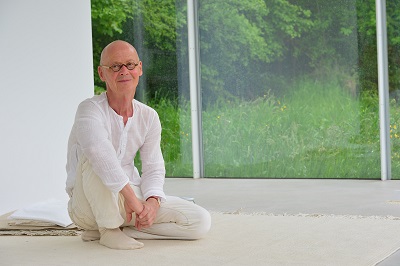
In the pavilion near the studio
-
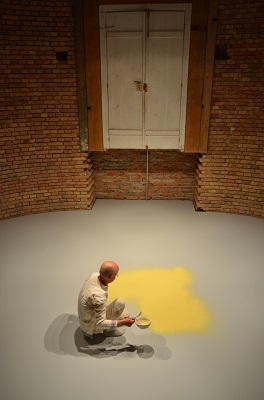
Pollen from Pine
-
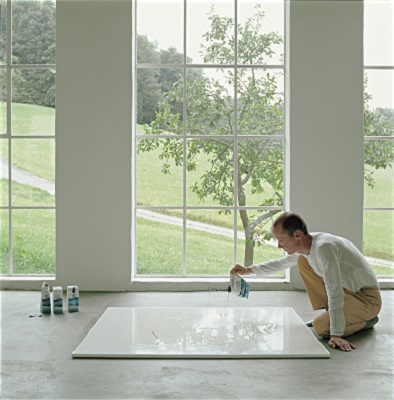
pouring the milk for Milkstone
-

Pollen from Hazelnut
-
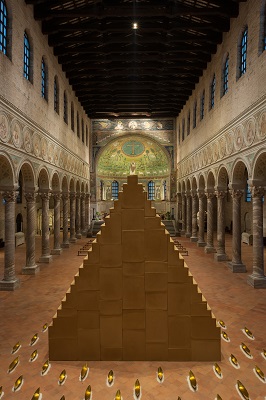
Zikkurat
-
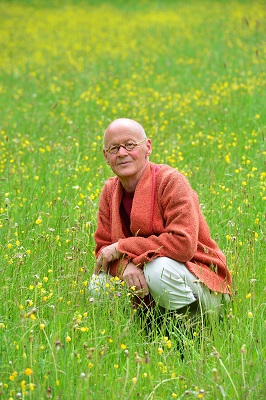
Collecting pollen from dandelion

